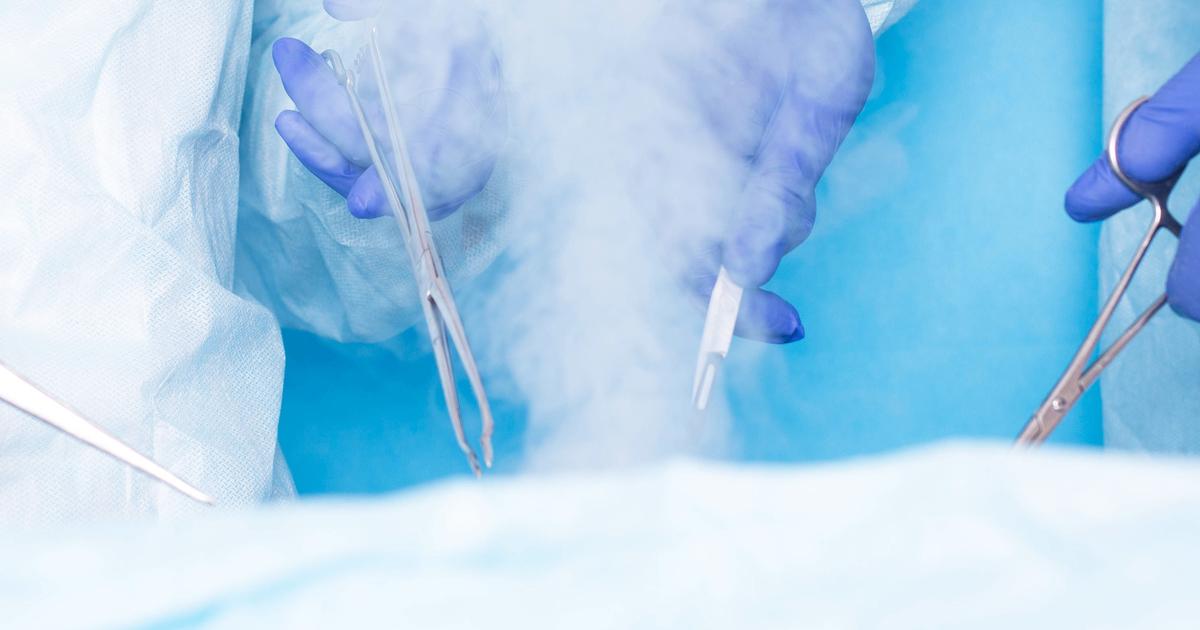Guide To Getting A Hemorrhoidectomy
A hemorrhoidectomy is a surgical procedure utilized to eliminate hemorrhoids. Hemorrhoids is an anorectal disorder where the lower veins in an individual's anus become swollen and inflamed. Most surgeries used to remove hemorrhoids take place in a surgery center and are considered outpatient procedures. Imaging technology may be used to assist a surgeon when they are performing a hemorrhoidectomy. While a hemorrhoidectomy is known to be the most effective way to treat hemorrhoids, it also presents the highest risk of complications.
There are several types of hemorrhoidectomy procedures, including an open hemorrhoidectomy, closed hemorrhoidectomy, rubber band ligation, lateral internal sphincterotomy, and stapled hemorrhoidectomy. The type of hemorrhoidectomy done on a patient is dependent upon the characteristics of their hemorrhoids and the symptoms they are experiencing.
What Are Hemorrhoids?

Hemorrhoids are inflamed and swollen venous blood vessels located in an affected individual's lower rectum and anus. Hemorrhoids in a healthy individual serve a functional purpose and typically do not cause any issues. However, some individuals have veins in this location with walls that stretch out too much. These venous walls become too thin and allow them to bulge and swell. Piles is a term used to describe hemorrhoids that have become swollen and inflamed.
There are two types of hemorrhoids. Internal hemorrhoids refer to hemorrhoids located inside of the rectum that cannot be seen or felt externally. External hemorrhoids refer to hemorrhoids located just underneath an individual's skin that surrounds their anus. External hemorrhoids are the type of hemorrhoids that cause an affected individual to feel the most pain because of the high concentration of pain-sensing nerves in that particular location. Hemorrhoids may enlarge and bulge to the point where they are outside of the patient's anal sphincter or prolapse. Hemorrhoids can cause anal bleeding and pain when defecating. Several complications can also develop if hemorrhoids do not heal and are left untreated.
Types Of Hemorrhoidectomies And Related Surgeries

A hemorrhoidectomy is a surgical procedure where a patient's external or internal hemorrhoids are removed because they have become severe or extensive. The most common type of hemorrhoidectomy performed to treat hemorrhoids is a closed hemorrhoidectomy. During a closed hemorrhoidectomy, the bundles of hemorrhoids are removed with a sharp instrument, and the remaining area is sewn together. An open hemorrhoidectomy describes a surgical procedure where the hemorrhoid bundles are removed with a sharp instrument, but the incision stays open instead of being closed with sutures.
A stapled hemorrhoidectomy is a newer method of hemorrhoid surgical treatment, where a specialized stapler lifts the hemorrhoids and staples them back into their places within the anal canal. A rubber band ligation is a type of hemorrhoid surgery where a rubber band is placed tightly around the base of the hemorrhoid to cut off blood flow to these tissues. After several days, the hemorrhoid tissue will die and fall off.
Preparing For Surgery

There are several things an individual affected by hemorrhoids may need to do to prepare for their hemorrhoidectomy. The physician performing the hemorrhoidectomy should be aware of all medications the patient takes regularly. Blood-thinning medications usually need to be stopped for a short period before the surgical procedure. The physician leading the hemorrhoidectomy provides instructions on what type of laxative to take and when to take it before the hemorrhoidectomy. A patient must follow the guidelines provided about when they should stop drinking and eating before surgery. If the affected individual has medications that need to be taken that day, they should only be taken with a small sip of water.
These procedures are put into place to ensure the patient's safety when they go under anesthesia for their hemorrhoidectomy. No perfumes, lotions, or deodorants should be applied the night before and the day of the hemorrhoidectomy. Before the hemorrhoidectomy, all nail polish, piercings, and jewelry should be removed. The individual undergoing the procedure will require a ride home, as medications used during and after the procedure will render them unable to drive safely.
How The Procedure Works

During the hemorrhoidectomy, the patient will receive spinal or general anesthesia to ensure they do not feel any pain through the process. The surgeon sanitizes the area and makes small incisions around the affected hemorrhoid. A specialized type of thread is utilized to tie off hemorrhoid to prevent excessive bleeding. A laser, scalpel, or cautery pencil is then used to remove the tied off hemorrhoid. The site of the hemorrhoid removal can be sutured closed but may be left open in some cases. A hemorrhoidectomy may be done with the use of a circular stapling device.
This method keeps the surgeon from having to make incisions and allows then to staple the patient's hemorrhoid back into its original place. A hemorrhoidectomy may be done with the assistance of a scope located on a specialized probe to help identify the hemorrhoidal blood vessels. This method ensures the hemorrhoid is removed without removing unaffected tissues that surround it. Most hemorrhoidectomies are performed in an outpatient surgery center and do not require an overnight stay.
Risks Linked To A Hemorrhoidectomy

Just like any other surgical procedure, a hemorrhoidectomy does carry certain risks for patients. The most prevalent side effects that occur include urinary retention, pain, and bleeding. A hematoma or collection of blood at the surgical site may develop in the patient after their hemorrhoidectomy. The surgical site also carries the risk of developing an infection if it is not adequately cared for, and precautions are not taken.
Other uncommon risks of a hemorrhoidectomy include a fecal impaction or trapped stool, anal canal stenosis or narrowing, recurrence of hemorrhoids, prolapse of the rectum, anal fistula development, urinary or bowel incontinence, and the development of a rectal fistula. Despite the risks that come with a hemorrhoidectomy, the procedure is known to be successful in treating hemorrhoids. Only around five percent of all patients who undergo a hemorrhoidectomy will experience the return of hemorrhoids.
Recovery Process

The entire recovery process can take anywhere between two and three weeks. A type of local anesthetic is given to the patient while they are still under anesthesia. This medication provides pain relief for the first six to twelve hours that follow the hemorrhoidectomy. Prescription medication is usually given to manage pain after the hemorrhoidectomy. A bland diet and lots of fluids are recommended for the first several days following the hemorrhoidectomy. Topical numbing medication may be provided to reduce the amount of pain when the patient has a bowel movement. The use of an ice pack to help relieve pain and reduce swelling in the anal region is also recommended.
In some cases, an antibiotic is prescribed following surgery to help prevent the development of an infection at the site of the hemorrhoidectomy. Stool softener medications usually need to be taken for several weeks following the hemorrhoid surgery to allow for proper healing of the area. A patient usually goes for a follow-up examination with their surgeon between two and three weeks following the procedure to ensure everything is healing correctly without complications.
Diet Tips After Surgery

A patient who has a hemorrhoidectomy can help prevent complications, pain, and discomfort by keeping to a diet of clear liquids. A clear liquid diet helps prevent constipation, nausea, and vomiting following a hemorrhoidectomy. Soup, juices, carbonated beverages, gelatin desserts, and popsicles are some common components of a liquid diet following surgery. An individual who has had a hemorrhoidectomy should stay well hydrated by drinking at least eight full glasses of water every day.
They can begin to eat a regular diet of green leafy vegetables, whole grains, and fruits around forty-eight hours after their procedure. All foods consumed within the first week after a hemorrhoidectomy procedure should be easy for an individual to digest. Easy to digest foods can help prevent complications associated with straining and irritation at the site of the incision. Foods such as red meat, frozen dinners, cakes, pastries, drinks with caffeine, dairy products, pizza, pasta, pies, and doughnuts should be avoided for the first couple weeks after a hemorrhoidectomy.
Exercise After Surgery

Most patients have moderate pain levels for between a week and ten days following a hemorrhoidectomy. This pain may naturally limit their physical activity levels, preventing them from getting back into their normal exercise routine. Most individuals who undergo a hemorrhoidectomy are told to rest during the first ten days following their procedure regardless of the pain to help promote healing. A patient who has had a hemorrhoidectomy should begin their exercise routine with short walks that increase in frequency each day.
If a patient is in pain when performing any physical activity or feels tired, they should stop what they are doing and rest. It is natural to feel pain when exercising for the first month or so following a hemorrhoidectomy because physical activity increases the amount of blood flow to the pelvic area. Any type of vigorous exercise regimens should not be resumed until cleared by the patient's physician, and it has been a minimum of six weeks since the hemorrhoidectomy.
Sitz Baths After Surgery

An individual who has had a hemorrhoidectomy will need to have sitz baths several times per day following their procedure to promote the successful healing of their wounds. A sitz bath is a bath where an individual fills a bathtub with between six and eight inches of warm, clean water, or uses a special tub for this purpose. The patient then sits in the bath with their knees against their chest for twenty minutes. An individual who has undergone a hemorrhoidectomy should also do Kegel exercises when they are taking their sitz baths three times per day.
Kegel exercises consist of the contraction of the anorectal muscles. These contractions should be held for a minimum of five seconds at a time. This Kegel process should be repeated in each sitz bath for a minimum of between three and five minutes. In addition to the regular sitz baths three times per day, a patient should also sit in a sitz bath following each bowel movement for the first three days. Sitz baths help patients avoid infection, discomfort, and pain after a hemorrhoidectomy.
Complications Of Hemorrhoids

While a surgical hemorrhoidectomy is known to be the most effective and successful method of treatment for severe hemorrhoids, it is also known to have the greatest rate of complications. Around five percent of patients who undergo a hemorrhoidectomy or other surgical procedures to treat hemorrhoids will have complications such as bleeding, the development of an infection, wounds that do not heal, urinary retention, and fistula formation. It is possible for an individual who undergoes a surgical procedure to treat their hemorrhoids to have an adverse or extreme reaction to the anesthesia.
Some individuals may have problems with passing stool if they experience excessive swelling near the area of the incisions. Some individuals experience more pain, discomfort, bleeding, discharge, and itching in the days that follow their hemorrhoid surgery than others. The most common complication reported with surgical procedures used to treat hemorrhoids is persistent pain that may be disabling for two weeks following surgery.
